Securing Your Mobile Devices, Apps, and Communications Against Modern Threats
In today’s hyper-connected world, our smartphones are more than just phones — they’re our wallets, our workspaces, our cameras, and our digital identities. With so much of our personal and professional lives stored on mobile devices, keeping them secure is not a luxury — it’s a necessity.
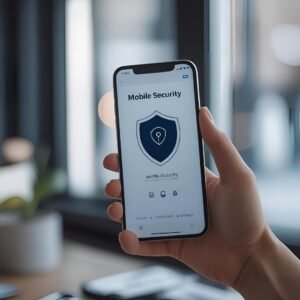
In this blog, we’ll walk you through the biggest modern threats targeting mobile devices, apps, and communications — and more importantly, how you can protect yourself from them with simple, effective practices.
📱 Why Mobile Security Matters
Think of your smartphone as a small computer in your pocket. Just like your laptop or desktop, it’s vulnerable to malware, phishing, data leaks, and even physical theft. With mobile usage surpassing desktop globally, cybercriminals are focusing their efforts on mobile platforms.
Your mobile device knows more about you than you think:
-
Your location
-
Banking and shopping information
-
Emails, messages, and social chats
-
Saved passwords
-
Private photos and files
Without proper security, all of this data is up for grabs.

🔓 Common Mobile Threats in 2025
-
Mobile Malware: Apps that secretly collect data, track you, or damage your device.
-
Phishing via SMS and Emails: Fake messages tricking you into clicking malicious links.
-
Public Wi-Fi Attacks: Hackers snoop on your activity when you use unsecured networks.
-
App Permissions Abuse: Apps requesting access to your microphone, camera, or contacts unnecessarily.
-
SIM Swapping: Hackers hijack your phone number to take control of your accounts.
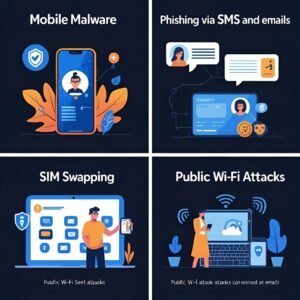
🔐 Step-by-Step Guide to Securing Your Mobile Device
Let’s break down what you can do today to boost your mobile security.
1. Use Strong Device Lock Methods
Always lock your phone using a secure method:
-
Biometric: Fingerprint or face recognition
-
Strong PIN or password (avoid 1234 or birthdates)
-
Avoid simple swipe patterns — they’re easily guessable.
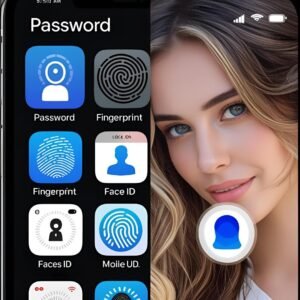
2. Keep Your Software Updated
Updates don’t just bring new features — they fix security flaws. Always install:
-
OS updates (Android/iOS)
-
App updates from trusted stores
Outdated software is a hacker’s playground.
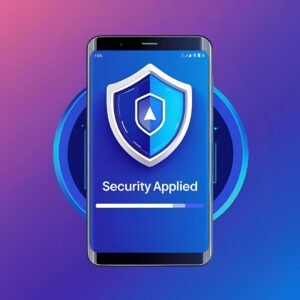
3. Download Apps Only from Trusted Sources
Avoid third-party app stores or random APK files. Stick to:
-
Google Play Store
-
Apple App Store
Even then, check:
-
App reviews
-
Developer info
-
Permissions asked
If an app wants access to your contacts, camera, and location just to play music — think twice.
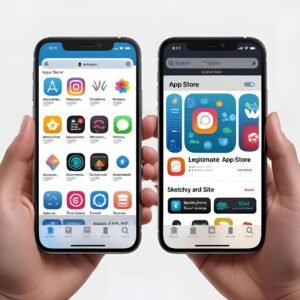
4. Control App Permissions
Apps don’t need full access to everything. Go to your phone settings and:
-
Review app permissions
-
Disable access to things like location, mic, or camera if not necessary
Tip: Android and iOS both allow one-time permissions now — use them!
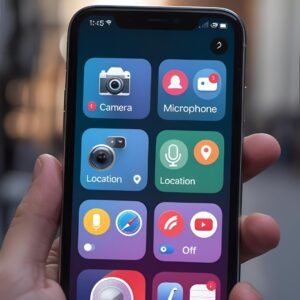
5. Avoid Public Wi-Fi or Use a VPN
Free Wi-Fi is tempting, but risky. Hackers can:
-
Eavesdrop on your data
-
Redirect you to fake websites
If you must use public Wi-Fi:
-
Don’t access banking or sensitive apps
-
Use a trusted VPN to encrypt your data

6. Enable Remote Wipe and Tracking
If your phone is lost or stolen:
-
You can locate it
-
Lock it remotely
-
Wipe your data to prevent misuse
Both Android and iOS offer these features for free:
-
Android: Find My Device
-
iPhone: Find My iPhone

7. Use Two-Factor Authentication (2FA)
Even if someone steals your password, 2FA adds a second layer of security.
Examples of 2FA:
-
OTP via SMS
-
Authenticator apps (Google Authenticator, Authy)
-
Hardware keys (YubiKey)
Enable 2FA on:
-
Google, Apple ID
-
Banking apps
-
Social media

8. Encrypt Your Communications
Use messaging apps that offer end-to-end encryption:
-
Signal
-
WhatsApp
-
iMessage
Avoid SMS for sensitive conversations — it’s easily intercepted.

9. Beware of Phishing Messages
Modern phishing looks real — from fake bank alerts to delivery scams.
How to spot them:
-
Urgent tone: “Your account will be blocked!”
-
Suspicious links or attachments
-
Email or SMS from unofficial domains
What to do:
-
Never click links from unknown senders
-
Hover over links to preview URLs
-
Call your bank or company directly if in doubt
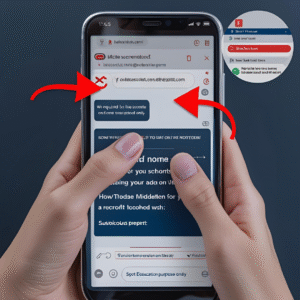
📲 Additional Tips for Secure Mobile Use
-
Avoid jailbreaking or rooting your phone — it disables built-in security.
-
Back up your phone regularly — to recover data if lost or compromised.
-
Use reputable security apps — for malware detection and device health.
-
Be cautious with Bluetooth and AirDrop — disable when not in use.
🌐 Mobile Security Is an Ongoing Habit
Mobile security isn’t a one-time task — it’s a habit. By combining smart settings, cautious behavior, and trusted tools, you can enjoy the benefits of your smartphone without leaving yourself open to digital attacks.
Think of it like this: you lock your front door — why not your phone?
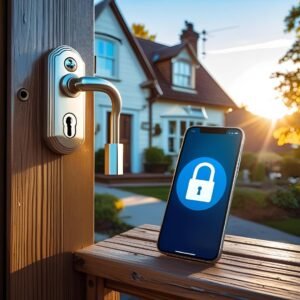
🧠 Final Thoughts
Modern threats are evolving, but so are defenses. You don’t need to be a tech expert to stay safe — just aware, alert, and proactive.
Take action now:
✅ Review your phone’s settings
✅ Remove unnecessary permissions
✅ Install a reliable security app
✅ Use 2FA and encrypted messaging
✅ Educate friends and family
Mobile devices are powerful — let’s make sure they’re also secure.
🔐 Ready to Learn More?
Stay tuned on ucybersecurity.com for more topics like:
Pingback: अपने मोबाइल डिवाइस को कैसे सुरक्षित रखें
Pingback: cybersecurity best practices